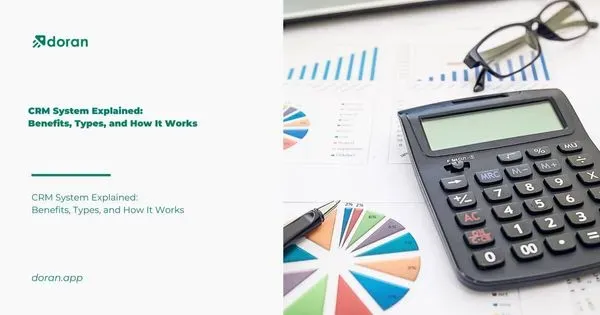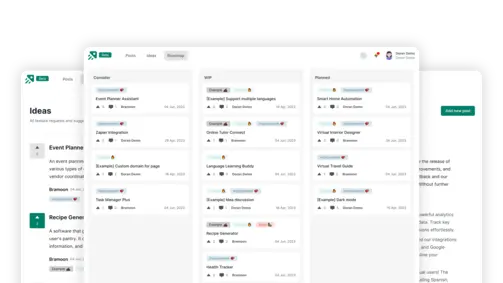[2023] Navigating the Future with Business Roadmaps
Create changelog and product roadmap for your product
Explore nowTable of contents 6 min
In the dynamic landscape of modern business, having a clear direction and well-defined goals is crucial for success. This is where business roadmaps come into play. A business roadmap is a strategic tool that outlines the journey a company will undertake to achieve its objectives. It serves as a visual guide, helping organizations navigate challenges, allocate resources, and seize opportunities. This article will delve into business roadmaps, their importance, and how they contribute to achieving long-term growth and sustainability.
What can a Business Roadmap be Used For?
A business roadmap enables you to understand precisely what is required, when, and how to achieve a company’s vision. To imagine when you will reach your goals, you can map out what will happen during a specific month, quarter, or year — or use any other time frame you want. A company roadmap is naturally flexible. Depending on the stage of business development and the size of your team, it can be as specific or abstract as you require.

What Distinguishes a Business Roadmap from a Business Plan?
The differences between business roadmaps and business plans may be something you’re curious about. Why would you need another planning tool if you already have a clear business plan?
There are important distinctions between business plans and business roadmaps, even though some overlap areas exist. Let’s examine each tool in more detail and discover how they differ.
A foundational and comprehensive document that is often written at the start of any business is a business plan. Running a business needs it, and new companies can benefit most. Large enterprises benefit from updating their business plans or building new ones when entering new markets or producing products and services that fundamentally change how the company operates.
Find out more: SaaS Customer Onboarding - Tips & Checklist

Business Plans
-
Format: A business plan is a document that outlines the company’s operations. It is recommended to keep it as brief as possible. However, a business plan typically takes up to 10 pages because of the volume of information it covers. The complexity of the company and its products will determine whether you go into details or opt for a brief slide show.
- Components: Typically, a business strategy includes the following:
-
A short paragraph includes the goal and purpose statements and information about the business, like its location and employees.
-
Products and services: A description of the company’s products and services, including information on production, patented technology, and pricing. Documentation of the revenue model (transactional, freemium, subscription, etc.) is also required.
-
Market: A broad overview of the sector and the competitive landscape, usually including a SWOT analysis, competitor profiles, and consumer demand information for the firm’s goods or services.
-
Marketing strategy: A high-level summary of how the business will use various marketing initiatives and distribution channels to reach and bring in potential customers.
-
Acquisition strategy: An explanation of the unique means by which you will attract, hold, and retain clients.
-
Financials: A brand-new company will offer target revenue predictions, but an existing company might include balance sheets, bank statements, or other financial information.
- Budget: Labor costs, product development and research costs, marketing costs, and other business costs.
- Audience: A business plan is typically used by CEOs and senior leaders and discussed with internal organizations. However, there may also be situations in which you must distribute your business plan to other parties, such as:
-
Banks
-
Investors
-
Partners
- Supplier
Business Roadmap
Let’s now work on business roadmaps. A business roadmap is a representation of particular elements of your business plan over a specified period of time. It is a useful tool for determining how well the company is progressing toward achieving its business plan because it offers high-level information about current and planned activities.
-
Format: A business roadmap illustrates a timeline with strategic objectives and projects. The firm has prioritized and decided to finish any activities that appear on your business roadmaps.
- Components: The following information, arranged in vertical or horizontal swimlanes, is generally included in business roadmaps:
-
Goals: Objectives to reach, like revenue or growth.
-
Initiatives: Significant areas of focus or investment which advance organizational objectives.
-
Milestones: Prominent moments of achievement.
- Dependencies: Anything that must be finished for another task to begin or that might block development, such as related tasks or external stakeholders.
- Audience: An internal planning tool, a business roadmap, is frequently developed by senior executives and distributed to functional teams, such as the product team, to help them plan. The following people, however, may receive copies of the business roadmap that you create:
-
Customers
-
Investors
- Partners Read more: SaaS Product Management Strategy
What should a Business Roadmap Include?
Generally speaking, the most significant strategic plans for the entire organization should be included in your business roadmaps. Goals, projects, and overall work topics from cross-functional teams are included in this. Make sure anything you include in your roadmap deserves to be there because you’ll probably need to modify it over time. When you add more to your plan, it becomes harder to modify the path when fresh chances come.

You might find that you work on several business roadmaps at once. Create a long-term roadmap, for instance, including every facet of business planning for the following three to five or even ten years. High-level projections for income, marketing and sales, staffing, and operations, as well as any upcoming new goods or services, could be included.
A business roadmap for the next year or every six months might then be created. Goals and initiatives at the corporate level as well as those related to particular roles, may be included in this plan. You need to show how the entire business will contribute to the organization’s overall goals.
It is advantageous to have all teams working within the same strategic planning platform, like Aha! Roadmaps, to fully benefit from this adaptive type of planning. Every roadmap that the team uses will automatically be keep updated because the planning data is updated in real-time. Doing this lets you bring the company around your goals and clarify how you’ll collaborate to get them done.
In the ever-evolving business landscape, having a detailed roadmap is like having a compass that guides you through challenges. It provides a structured approach to achieving your business objectives while fostering adaptability and innovation. By understanding the significance of business roadmaps and mastering the art of roadmap planning, you can lead your organization toward sustainable growth, market leadership, and enduring success.
What to not miss out on our blog
Gain insightful knowledge and invaluable experiences from dedicated experts.

CRM System Explained: Benefits, Types, and How It Works
Discover everything about CRM system. Learn the benefits and how a CRM system works to improve customer relationships and streamline business operations.

Are you ready? Start your free trial today.
Enhance communication, keep track of the progress, understand customers' insight and more by taking your first trial on Doran.
Sign up for free

